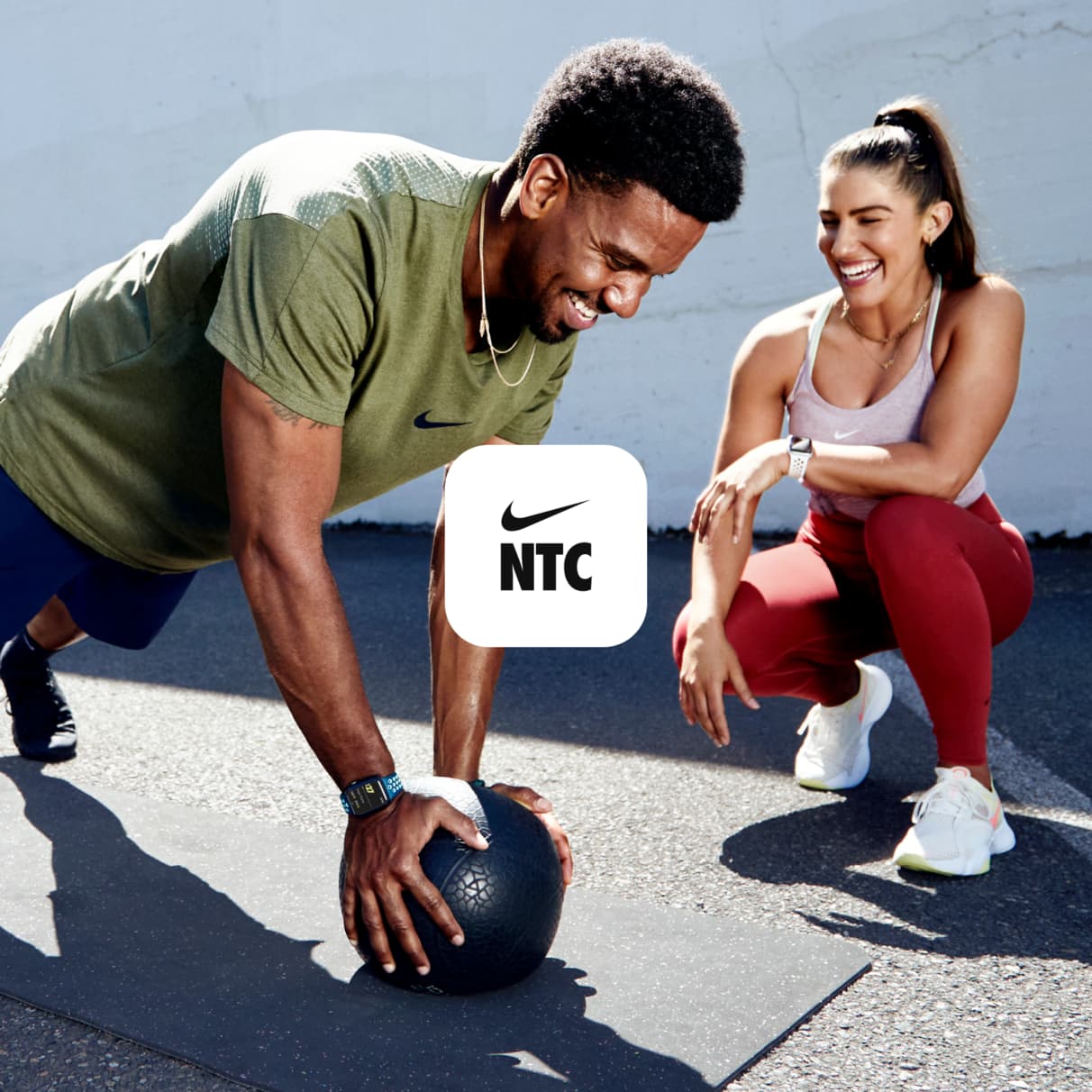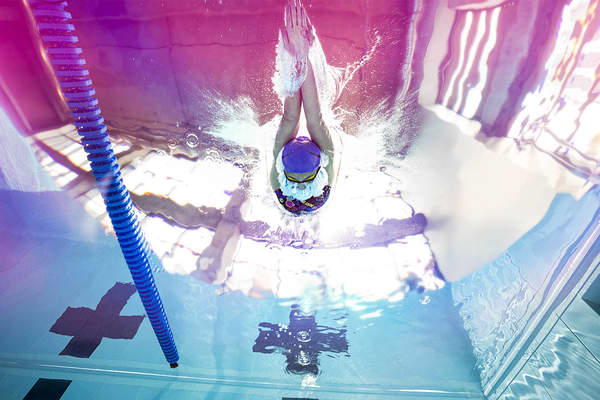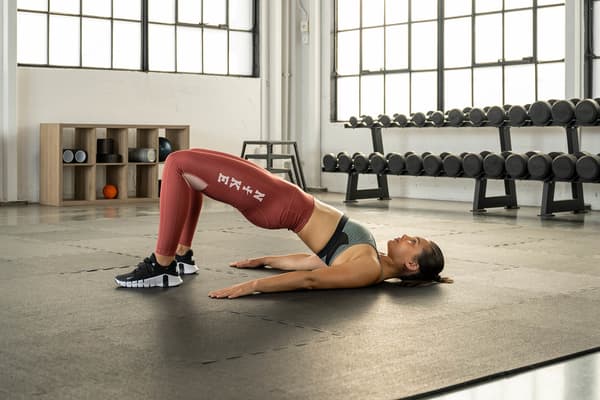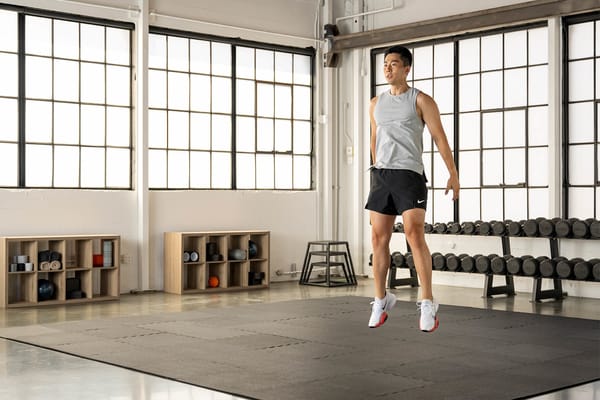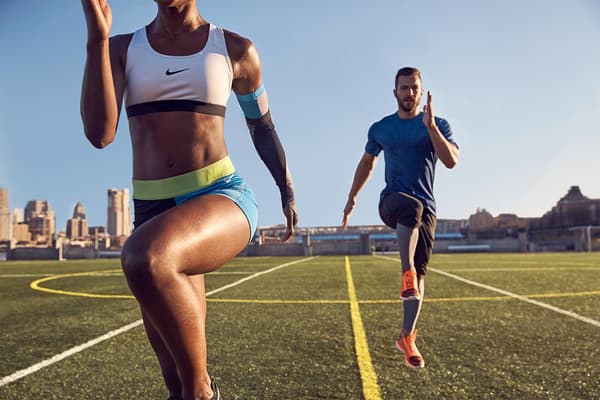How To Swim Faster, According to Coaches
Sport & Activity
Here's what you can do to improve your speed in the water.

Whether you swim recreationally, compete in triathlons or use swimming as a form of cross-training, you may be looking for ways to set a new personal best in the lap pool. If you're wondering how you can get faster at swimming, the first thing to know is this: it's a goal that's within reach.
"Most of us can improve our swimming speed, but it's important to set yourself up for getting faster in the right way. You have to set practice and lifestyle standards to reach this goal, whether you're a beginner, triathlete or elite swimmer", said Marli McIntire, an American Swimming Coaches Association-certified swimming coach and stroke technician. Overall, it requires making tweaks in the pool, adopting a strength-training plan on land and maintaining healthy lifestyle habits.
Introduction to Swimming Faster
1.Step 1: Focus on Efficiently Moving Through the Water
Efficiency is how much energy is used to get from one end of the pool to the other.
"Everything in swimming comes down to efficiency, which will help conserve your energy, so you can use that energy for speed", McIntire said.
To start, measure your distance per stroke. For context, this is how far you're able to move your body through the water with each stroke. McIntire recommended counting your strokes per lap (each time your hands enter the water). Distance per stroke can be used as a measurement whether you're looking to swim a faster freestyle, backstroke, breaststroke or butterfly.
Next to improve efficiency, try these three things:
- Improve your kick. Whether you're a beginner swimmer or have more experience, work on your flutter kick, McIntire said. "It's not always easy for people who are just starting out in swimming if your ankles aren't very flexible", she said. Doing ankle mobility work outside of the pool will help.
To practise ankle mobilisation exercises, try pointing and flexing your feet, circling your feet clockwise and anti-clockwise and doing a stand-up calf stretch. For a whole body stretch to loosen up before hopping into the pool (or to recover after), McIntire likes a move known as "the world's greatest stretch"—a lunge that involves twisting and lifting one arm up to the ceiling.
In addition, choose a long fin to practise kicking in the water, McIntire said (fins come with a long or short blade). "The longer blades help you float better, keep your hips up and keep legs straighter, reducing the amount of incorrect 'bicycling', or bending of the knees", she said. In addition, long fins can help improve ankle and foot flexibility, which can better your kick, McIntire said (wear short fins for speed workouts).
- Master rotary breathing. "The way you breathe contributes to faster speed", McIntire said. When doing a freestyle stroke, make sure your face is level with the water and gently rotate your head from side to side to breathe. In other words, try not to lift your head up out of the water as it could cause your lower body to drop. Not only does this disrupt your body's alignment but it also affects how efficiently you move through the water. "One [eye] goggle should be in the water and one out when you are breathing out of your mouth. That's the perfect head position", she said.
- Stay in a straight line. Maintain a nice streamlined body position in the water, which will improve efficiency. To do that, imagine that you're swimming between two invisible lines. This means you remain level from head to hips to ankles. "Rotate your body back and forth, maintaining this position as you swim", McIntire said.
- Improve your kick. Whether you're a beginner swimmer or have more experience, work on your flutter kick, McIntire said. "It's not always easy for people who are just starting out in swimming if your ankles aren't very flexible", she said. Doing ankle mobility work outside of the pool will help.
2.Step 2: Try a Speed Workout
It sounds basic, but it's true: "you have to swim fast … to swim fast", McIntire said. "If you only swim slow and easy, without getting out of your comfort zone, you won't get faster", she said. That's where speed workouts come in. Replace one existing easy pool workout with a speed-focused session. Swim 50 metres (or two lengths of the pool) and make note of your stroke count. Then, do four 25-metre swims (with a 15 to 20-second rest in between each lap) and go as fast as you can, but try to maintain that same distance per stroke or get within two strokes, McIntire recommended.
3.Step 3: Add Strength Workouts
Resistance training can help your stroke and body position in the water. Exercises that focus on hinging (such as deadlifts), squatting, single-leg balances, pulls (such as lat pull-downs) and core work are all important to do out of the pool when you want to become faster.
"All these movements translate to the water very well", said Lee Sommers, strength coach for the Nation's Capital Swim Club, Rockville-Montgomery Swim Club and All Star Aquatics. For instance, quad strength will help your kick strength and power. Hamstring strength will improve swimming resilience for later in the race. "The more powerful the lower body and hips, the less you have to rely purely on your upper body [to move you through the water]", he said.
Strong lats are important for your stroke, as this muscle group allows you to pull more water as you swim. And core work helps improve stroke efficiency and proper body position and helps guard your body against injury, he said.
Specifically, training pull-ups may also pay dividends in the water. Research shows that pull-up performance is related to swimming speed, per a 2018 issue of The Journal of Strength and Conditioning Research, likely because it's a marker for upper-body strength.
Aim for one or two strength sessions per week and consider working with a personal trainer to help you programme correctly.
4.Step 4: Practise Healthy Habits (Outside of the Water)
It's not all about what you do in the pool. What you do outside of the pool in day-to-day life counts when learning how to be a faster swimmer, too.
- Hydrate. Dehydration can make you feel fatigued and a bit out of it, especially while working out. Sip half your body weight in ounces of water each day, suggested McIntire, who is also certified in sports nutrition. If you're amping up your workouts, supplement with an electrolyte beverage that contains sodium. And make sure you check the label on your favourite sports drink—if yours does not have added sodium, stir a pinch of salt into the bottle and shake it up.
- Maintain carbohydrate intake. Carbohydrates are the preferred source of energy for the body and brain, McIntire said. So, make sure that you're eating enough high-quality carbohydrates during the day, which are found in fruits, vegetables, whole grains and legumes. McIntire also recommended a small carbohydrate-rich pre-workout snack (such as a banana or serving of apple sauce) 20 minutes prior to dipping into the pool. Consider working with a registered dietitian specialised in sports performance to make a detailed fuelling plan that works best for your body.
- Recover. When you're chasing after a goal, it's easy to focus more on training rather than resting. But gains happen with rest. Make sure you're getting the recommended seven (plus) hours of sleep per night, at least. And if you can sneak in naps, do it. "Take advantage of any extra time to rest up", McIntire said.
Words by Jessica Migala
- Hydrate. Dehydration can make you feel fatigued and a bit out of it, especially while working out. Sip half your body weight in ounces of water each day, suggested McIntire, who is also certified in sports nutrition. If you're amping up your workouts, supplement with an electrolyte beverage that contains sodium. And make sure you check the label on your favourite sports drink—if yours does not have added sodium, stir a pinch of salt into the bottle and shake it up.
